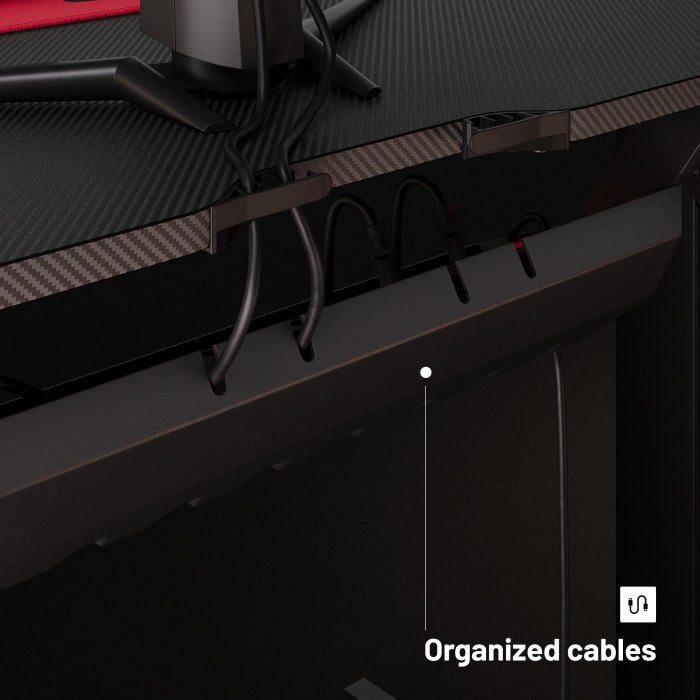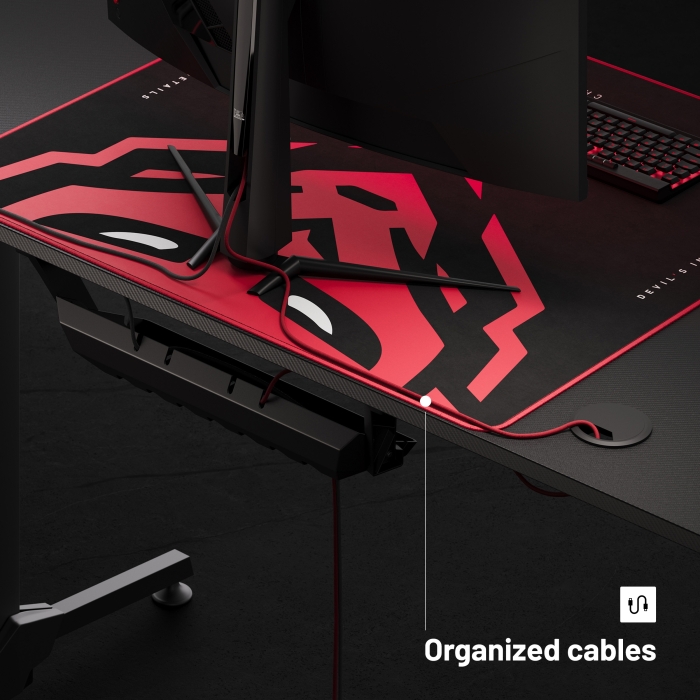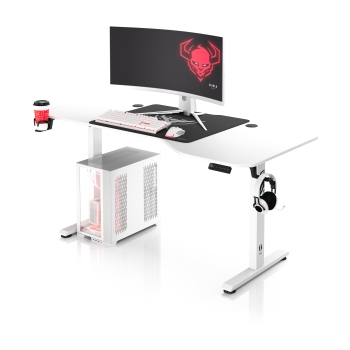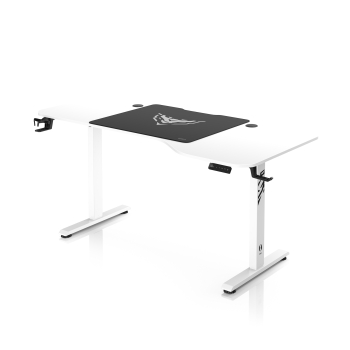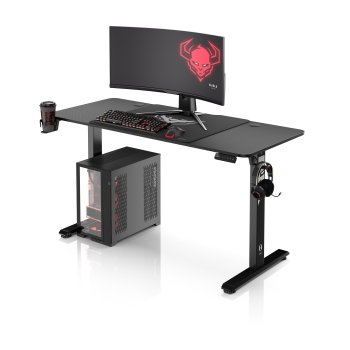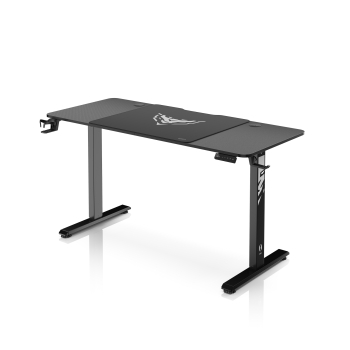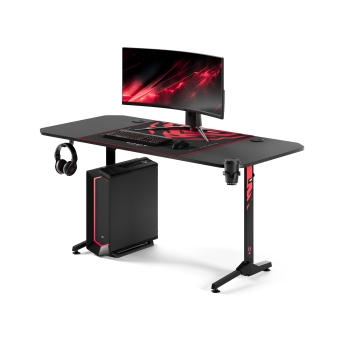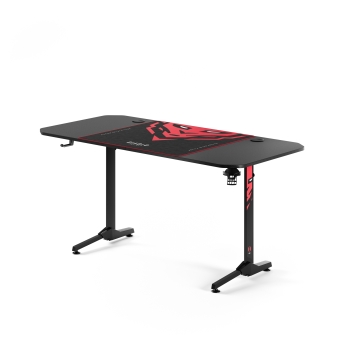How to organize cables
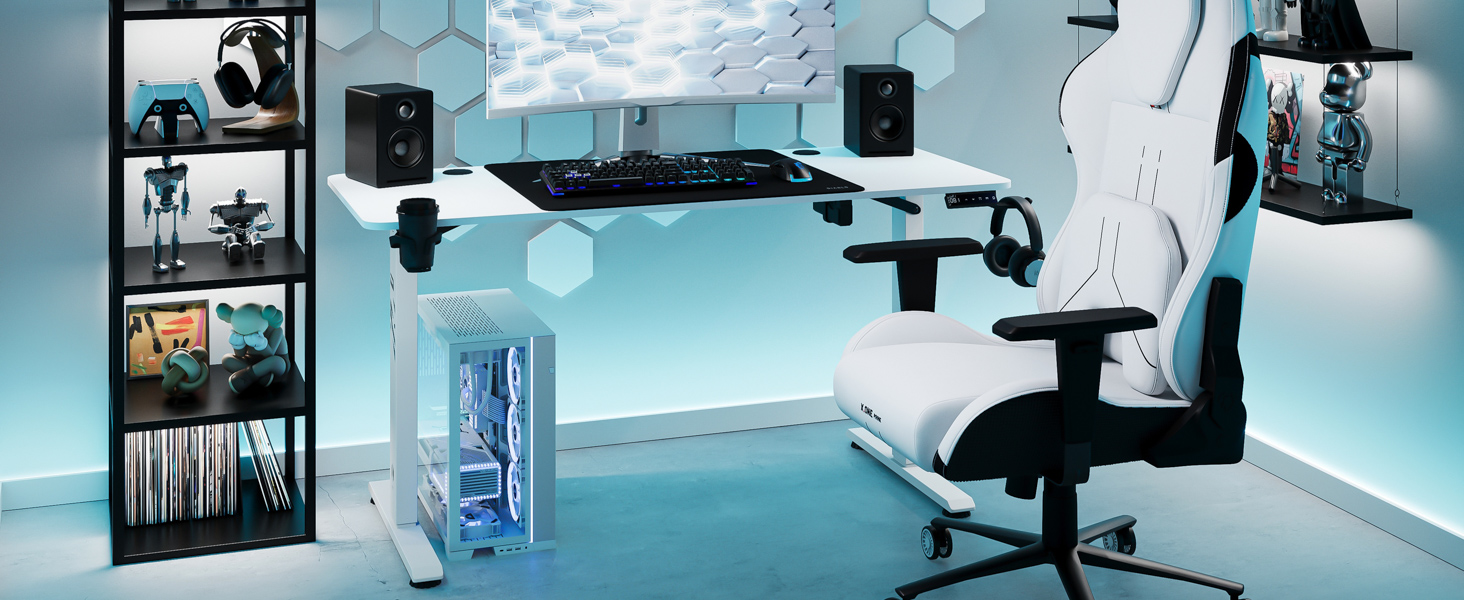
How to Organize Cables So Your Gaming Setup Stops Being a Mess – Cable Management in a Nutshell
The moment has finally arrived. After hours of grinding and upgrading your character, you're ready to face the final boss. The goal is to defeat them on the first try and claim the coveted trophy. But during the battle, you accidentally catch a cable with your foot and disconnect your computer’s power. Your chance to earn a unique achievement is lost forever. This situation can be avoided by ensuring proper cable management. How can you achieve that? Here’s how to take control of your gaming setup so tangled cables stop being a nightmare.
Why Is Cable Management Important?
Tangled cables make your gaming setup look smaller than it actually is. The mess isn’t just unsightly—it also makes it harder to focus at your gaming desk. Distractions become more frequent, and the risk of accidents increases.
Cables lying on the floor are just waiting to be tripped over. In the best-case scenario, you simply unplug something and miss out on another in-game frag. In the worst case, you trip while getting up, injure yourself, and damage your dream PC setup, which often takes years to save up for.
Hiding cables and organizing wires properly isn’t just for visual aesthetics. Above all, it’s about ensuring safety—for yourself and your valuable equipment.
Cable Management in a Few Simple Steps
Organizing your cables doesn’t have to be difficult or complicated if you approach it strategically. Here are some key steps to follow.
Unplug All Cables and Untangle the Wires
It may seem obvious, but without disconnecting all your devices, you won’t be able to plan the optimal cable layout. After all, years of modifications and changes to your gaming setup may have led to quite a bit of cable chaos. Don't forget to unplug the power strip from the electrical outlet. This will help you avoid the risk of electric shock and make untangling the cables much easier.
Planning Your Cable Organization
Now it’s time to plan. Identify all the devices that need to be connected to a power source or directly to your computer, and find the best spot for them on your desk. Their cables should be routed in a way that prevents them from crossing over each other. A good strategy is to group devices that are close together and bundle their cables using zip ties, for example.
Under-desk organizers can also be extremely helpful, allowing you to route cables neatly and even secure your power strip out of sight. Some gaming desks come with built-in cable management systems featuring convenient organizers (Diablo X-Mate 1000, Diablo X-Mate 1400, Diablo X-Mate 1600), so in those cases, you have a ready-made solution at your fingertips.
A simpler way to route and hide cables is by securing them to the underside of your desk and the back of its frame using mounting tape and self-adhesive cable clips. This keeps them out of sight when viewing your setup from a distance.
To make things even easier, consider labeling each cable with colored tape based on the device it belongs to. This will save you from having to visually trace cables later and figure out what they power when you need to unplug something.
Getting Rid of Unnecessary Cables
How you route your cables will largely depend on the size of your gaming setup and your personal preferences. However, one thing is certain—the fewer cables on the desk, the better.
If you use two or three monitors, consider investing in special monitor mounts, which often come with built-in cable management features. If your budget allows, you might also switch to a wireless keyboard and mouse.
Not ready to part with your favorite wired mouse? In that case, get a mouse bungee—a cable holder that significantly improves both aesthetics and ergonomics.
Placement of the Power Strip
Thoughtful placement of the power strip is just as important as cable organization. If your computer is positioned on the left side of your gaming setup and the monitors are in the center, placing the power strip on the right will make optimal cable management much more difficult.
A good solution is mounting the power strip directly under the desk using a dedicated organizer. This keeps most of the cables hidden and out of sight. Alternatively, you might consider using a cable management box placed on the floor. Storing the power strip and excess cables inside not only enhances aesthetics but also reduces the risk of damage—especially if you have pets.
It’s also worth planning ahead for the power cable leading to the wall socket. It should be routed in a way that prevents it from tangling underfoot or posing a hazard. To conceal it, you can use cable management raceways, which can be attached with hot glue, double-sided tape, or wall-mounted fasteners.
Solutions to Help with Cable Concealment
Knowing how to organize cables is sometimes not enough to control unruly wires. In these cases, additional solutions can make cable management just as easy as defeating the first boss on an easy level. Here are some of the best solutions:
- Gaming Desk with Cable Management System – If you're in the market for a new desk, choose one with built-in cable organization to save time and effort. The Diablo X-Mate series, for example, is equipped with practical cable pass-throughs that guide cables straight to an organizer like the Wire Mate™ located underneath. It's like entering an invincibility cheat code when fighting a tough opponent – effortless victory!
- Cable Ties – For grouping and securing cables, cable ties (zip ties) are more than sufficient. If you want a cleaner, more aesthetic look, consider replacing them with rubber or Velcro ties.
- Under-Desk Organizer – You can easily add an under-desk organizer to almost any desk by screwing it in. This will allow you to store cables and even the power strip, while helping route cables conveniently to the CPU unit and electrical socket.
- Cable Storage Bins – To prevent cables from tangling underfoot, getting damaged, or ruining your setup's aesthetics, use a dedicated cable storage bin placed on the floor. It can hold cables, power adapters, and the power strip.
- Cable Sleeves – Sometimes, fully hiding cables is impossible. In such cases, aesthetic cable sleeves can help. These sleeves encase the wires, some of which resemble a spine, adding a bold, edgy look to your setup.
- USB Hubs – If you frequently connect USB devices (e.g., smartphone, headphones, camera) to your computer and don't want to constantly bend down to the CPU, consider placing a USB hub on your desk. It minimizes the number of cables running to the computer and makes peripheral management easier by providing additional USB ports.
Cable Management Is Not as Scary as It's Made Out to Be
Cable management doesn’t have to be a daunting journey through a maze of wires. By following basic tips and using thoughtful solutions such as cable ties, under-desk organizers, and cable storage bins, you can easily create an aesthetically pleasing and safe environment that improves the ergonomics of your gaming setup and helps you achieve virtual victories. It's also a good idea to simplify the task by choosing a gaming desk with a built-in cable management system.















